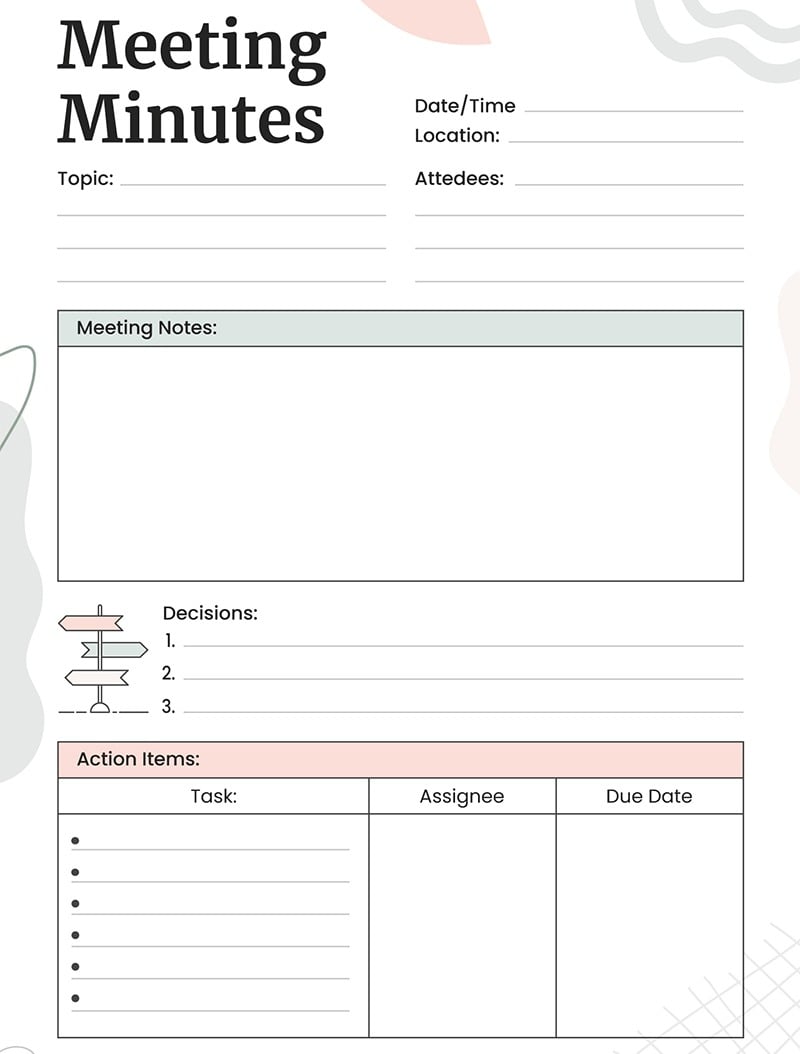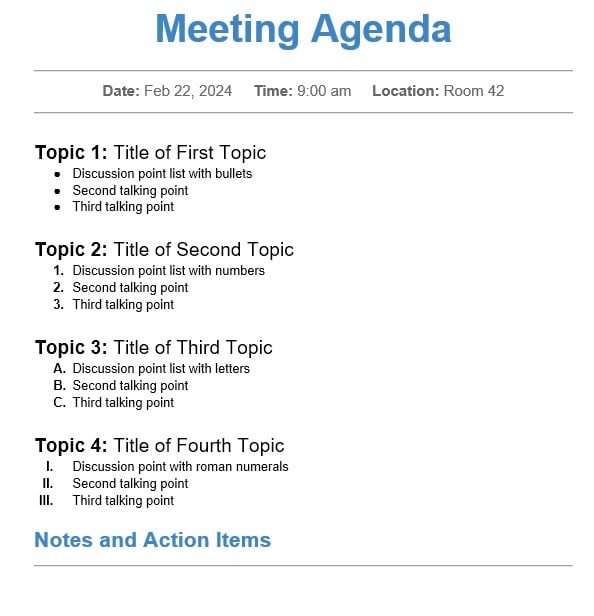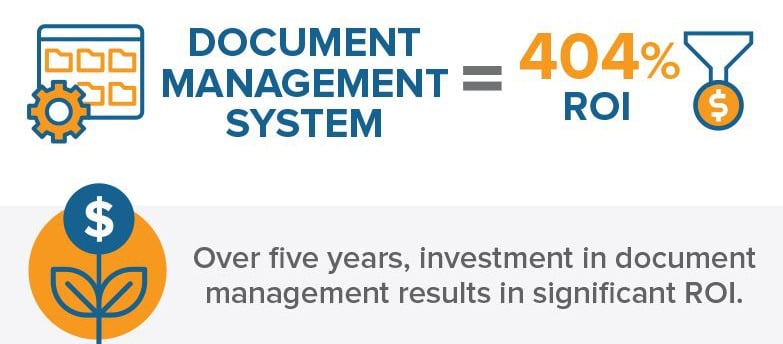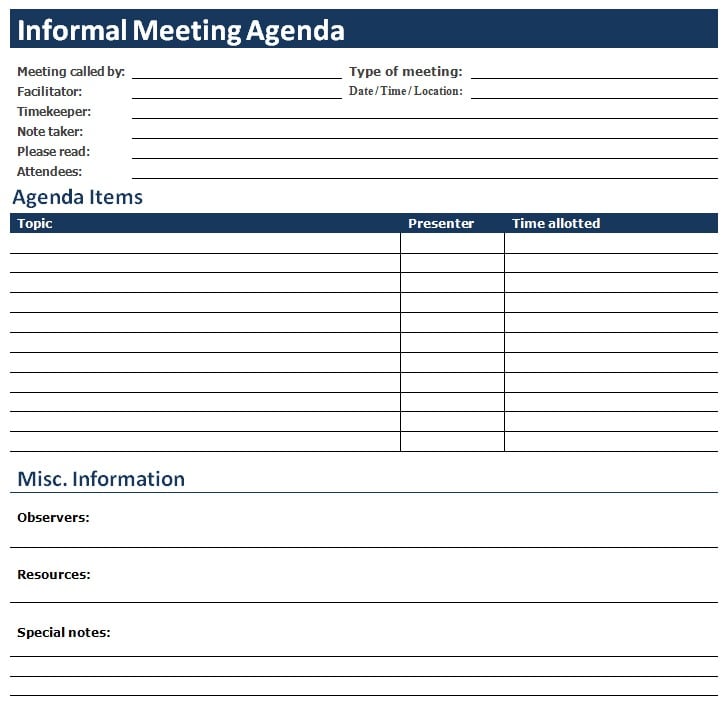Meeting Minutes – How to Record, Templates, Their Importance

Have you ever been in an official or unofficial meeting and seen everyone busy participating in one capacity or the other? There is always one individual taking notes on the ongoing activities amid all these seriousness.
The note contents are meeting minutes, and they play a vital role in the success of every organization's activities. This activity may seem simple, but it has its dynamics, which we will explore as we dive deep into this article.
Let’s get started.
What are the Meeting Minutes?
Meeting meetings are notes and recordings a board secretary takes during a meeting or a hearing. They include the highlights or points shared while the meeting was in session and the activities that require execution.
Every meeting minute has a formal writing style. Informal words and slang are not a part of its makeup. The outline has a predetermined structure and composition.
This document is relevant during and after the meeting because absentees can access the content of the meeting. It serves as a historical document relevant for future purposes.
If the organization enters a contract or legal situation with an external party, this document is a reliable and official record.
Meeting minutes give a sense of accountability towards issues for those present and individuals absent because they can get up to speed with the matters.
Do you want to manage your meeting time and properly document your meeting minutes? Write an effective team meeting agenda and share it with participants ahead of the planned meeting. A typical team meeting agenda covers what you plan to discuss during the meeting.

Who Takes Meeting Minutes?
The secretary carefully and diligently takes vital meeting notes or records the minutes. Businesses are not the only entities that take minutes. Entities like nonprofits, government entities, schools, public companies, and trade unions also take formal meeting minutes.
Corporate organizations recognize the importance of effective meeting minutes and take notes of meeting agenda for future reference.

Why Are Meeting Minutes Important?
Board meetings are unsuccessful without note-taking or keeping a written record of the meeting’s details.
Let's consider why writing minutes is an important task.
1. Structure
The minutes of a meeting provide structured information about events in previous meetings and vital topics the board member needs to discuss in the next gathering.
2. Record Purposes
Keeping records of discussions during a meeting helps the company create a catalog of official records for future purposes. Events may occur requiring the board of directors to reference the meeting minutes when making vital decisions.
3. Promotes Transparency
An effective way to promote organizational transparency is to keep records of previous meeting minutes. Every board member and employee can view issues that came up for discussion without being in the dark regarding important matters.
4. Evidence of Deadlines and Task Reminders
Employees may get distracted when they have tasks to complete. Penalizing defaulters is easier when you have proof via meeting minutes. They serve as a means to remind individuals responsible for certain tasks.
5. Alternative to A Meeting Management Tool
Not all organizations can afford or subscribe to a meeting management tool like Fellow, Calendly, Slido, and Vidyard. These tools help to automatically track meeting titles, attendees, next meeting date, and times.
A valid alternative for this tech is to manually write effective meeting minutes.
6. Organization
Keeping meeting minutes helps protect the interest of all concerned parties, including the meeting attendees and those unable to attend. The absent board members can have an idea of issues that came up for discussion during the meeting.
7. Progress Tracking
Writing meeting notes is an effective way to track progress. You can monitor the progress rate of tasks assigned to members present. Follow-ups are easy to execute when you have the agenda items noted earlier.
4 Steps Involved in Recording Meeting Minutes
Every minute taker must learn the ropes and steps involved in taking meeting minutes. For you to have a clear insight into the meeting minutes process, let's explore the steps needed to record meeting minutes.
1. Pre-Planning for the Board Meeting
Planning how a meeting will commence before the official date and time is an effective way to ensure the recording process goes smoothly.
The board chair, the secretary, or the designated minutes taker should brainstorm and draft the meeting’s agenda before the meeting date.
Drafting every agenda item helps to project how the meeting will commence and end, giving an idea of the minutes’ content. Board chairs, team leaders, and business owners add fun team meeting ideas to avoid dull meetings.
During the pre-planning phase, the board chair can give the minutes format to follow, and the secretary can take the initiative by reusing a previous meeting minutes template.
After creating a format, the board chair will have access to the meeting agenda and the details of all attendees, including guests or speakers.

2. Taking a Record of the Board Meeting
During the meeting, the board may instruct the secretary or the meeting taker to type or manually write meeting minutes.
The secretary does not need to write all the words spoken by the meeting participants. This task will be easier if the secretary receives a meeting minutes template to use as a guide.
Here’s a helpful tip. Participants will discuss various things and may even stray beyond the meeting agenda. Focus on the most important things worth recording and present them intelligibly.
When writing board meeting minutes, you must avoid certain factors that can jeopardize the integrity of the content. Record every discussion without personal bias, and avoid inflammatory and unnecessary remarks and personal observations.
Ensure your content is simple and on point. Once the meeting is over, write the meeting minute from scratch in a more structured and comprehensive format. This document will serve as the formal record of the meeting.
3. Writing the Official Record of the Board Meeting Minutes
Before you present the final copy of the meeting minutes, you still have some work to do. Review the original agenda to gain complete insight into the meeting's projection. This step helps guide you on ways not to draft the minute.
After you understand the scope of the meeting agenda, you can begin to review the vital actions, main motions, votes, and decisions to ensure transparency and clarity. If you have ambiguously written some points, make them concise, clear, and easy to comprehend.
Submitting bare meeting minutes without vital attachments is not a good practice and is a display of unprofessionalism. Attach meeting handouts and reference documents to the final copy. It is beneficial to the company if the minute is required when a legal issue arises.
4. Signing, Filing, and Sharing Minutes
Get the board secretary to sign the final copy. Your organization may mandate you to get the president’s signature on the document before recognizing it as official. It will be all for nothing if you don't get these signatures on the document.
Remember, meeting minutes are vital documents relevant to legal protection. It matters how you store such documents. Ensure you store them in a secure location. Find out the legalities surrounding your organization’s storage process for important documents in this manner.
Having just one copy is a terrible idea and can be costly. You should have backup copies in print, on a hard drive, or on the board portal.
Before you begin the sharing process, go through the document diligently to ensure every vital detail is in place with the president’s signature boldly written.
What to Include in Meeting Minutes
A meeting minute is an important document with various benefits to the organization. However, its content is unique and must be in the right format for the desired result.
Productive meetings are possible when the minute taker follows the due process while taking notes. Here is a format you need to follow when preparing effective meeting minutes.
1. Meeting Time and Date
The first point you must note is the date and time of the meeting. This action may seem simple, but very important if you want an effective meeting minute.
Referencing is easier when your meeting minute has specific dates. You can seamlessly source information from previous meetings without struggles with their dates and time properly recorded.
Clearly stated date and time in a minute encourages tracking and event monitoring. You can identify what area of the agenda has been accomplished and what’s still outstanding.
2. Names of the Participants
Gather and document the details of every active and passive attendee. Take note of the members of the board who will be unable to attend.
At the beginning of the meeting, discussions will go on about the matters that came up in the last gathering. You can use the draft of the last meeting to identify those present.
The calendar invite is a reliable document to check names as participants join or enter the room.
3. Purpose of the Meeting
The purpose of the meeting is one of the most important details you must include. While stating this detail, elaborate your explanations to ensure the reader will have a perfect insight. This aspect of the minute will help bring every participant and non-participant on the same page.
While taking notes, ensure you don't leave out any of these items because it can affect the integrity and authenticity of the meeting documents.
4. Agenda Items and Topics Discussed
Your meeting agenda is a perfect guide or general outline for your meeting notes. If you want a comprehensive meeting minute, use each agenda item as a section to further record notes and explain concepts better. You can clearly state vital outcomes or major decisions.
Use file-sharing sites and tools to record the details and send the content of the agenda to every concerned party. Every participant is fully aware of the items for discussion during the meeting. They can prepare ahead rather than coming in with a blank mind.
You can use a good meeting minutes template to draft the agenda items. This tool is an effective way to save time and energy and increase effectiveness.

5. Key Decisions and Action Items
Board meetings are usually lengthy. The time taken depends on the topic and how fast the participants produce solutions to the problems they identify.
You must note any major decisions, action items, and reports presented when it happens. Make further edits to ensure the points are well structured.
Capturing every detail of the board directors' meeting is like looking for a needle in a haystack. Focus on valuable points and leave out issues that don't add much value. Listen for recommendations, challenges, and solutions.
Checkbox, bolding, and highlighting are ways to help you identify these takeaways you skillfully acquired during the meeting for an easy review.
6. Next Meeting Date and Place
In most meetings, the board can discuss some topics halfway without coming to a consensus or offering solutions to problems. The board members will require information about the next meeting to ascertain when they will continue the discussion.
Clearly state the next meeting date and location in the meeting minute. This information gives every participant a sense of awareness of the deadlines attached to individual responsibilities.
The board may change the meeting venue to move it online rather than onsite. Every participant deserves this information to ensure they prepare appropriately.
7. Documents You Need to Attach
Board members may refer to documents or external material relevant to the matter for discussion. These documents are vital to ensuring the meeting is successful. You must gather every material referred to and attach it to the final copy of the minute.
Meetings are usually recorded electronically with a recording device. Ensure you get the recording and attach it to the original meeting report for proper documentation.
The Process of Writing Meeting Minutes
During the meeting, you take note of the activities and key discussions. Your job as a minute taker continues after the meeting.
1. Relax Before You Start Writing
Get yourself into a relaxed position where you can think and make meaning of your records. Don’t start writing until you can focus your mind on the meeting that you recorded.
2. Start Writing Immediately for Better Recollection
Don't engage in other activities before recollecting the event and writing your minutes. Beginning immediately after the meeting makes the recollection process easy and more productive. You will remember every vital detail and the key points you extracted in the meeting.
3. Revisit the Original Meeting Agenda
While creating your final copy, ensure you revisit the original meeting outline to help you make necessary adjustments.
The outline serves as a guide to identify which areas need clarification and what other information you need to add. Confirm if you have recorded every verdict, activity, and motion.
4. Edit the Final Copy for Brevity and Clarity
The final and most important activity in writing meeting minutes is revising the content and ensuring it is brief and clear. People don't like reading long texts, avoid beating around the bush while drafting the minutes.
Distributing the Meeting Minutes
One of the reasons for writing the minute meeting is to distribute the document to every concerned party. The process of distribution is equally important as the writing process. You can distribute the minute physically, online, or through the cloud.
Distributing the minute hand to hand has its drawbacks. This process is time and energy-consuming. Some of the documents may not get to the concerned party on time, and they can lose some attachments.
A paperless sharing process is more effective because it reduces time, energy, and effort. You can use cloud storage and file-sharing tools that encourage sharing documents with other users.
These documents are safe from corruption since they are on the cloud. You can access them when you require them.

Templates for Meeting Minutes
Drafting meeting minutes can be an arduous task without the knowledge of how to go about the process. You can use a free template as a guide while creating your masterpiece.
Here are some free meeting minutes templates you can use as a guide while drafting the content of your minutes.
1. Board Meeting Minutes Template
Call to order
Facilitated by the chair of the board.
[Chair of the board’s name] called to order the regular meeting of [your organization] at [time of meeting] on [date of meeting] in [location of meeting].Attendance
Facilitated by the secretary.
Secretary conducted a roll call. The following persons were present:
[Names]The following persons were absent:
[Names]Approval of minutes
[Secretary’s name]Open issues:
New business:
Adjournment
[Facilitator’s name] [Time meeting ended].Submission and approval of minutes
Minutes submitted by: [The board secretary]
Minutes approved by: [Board chair or meeting facilitator name]

2. Informal Meeting Minutes Template
Call to order
A meeting of [organization name] was held at [location] on [date].
Attendees
Voting members in attendance included:
[Attendees]Guests in attendance included:
[Guests]Approval of minutes
A motion to approve the minutes of the previous [date of previous meeting] was made by [secretary’s name] and seconded by [seconder’s name].
Reports
[Report name] [Name of presenter]Main motions
[Name of motion] moved by [name of mover] and seconded by [seconders]. The motion [carried or failed] with [number of votes] in favor and [number of votes] against.Adjournment
[Meeting facilitator’s name] [Time of adjournment].
3. Public Hearing Meeting Template
Meeting date:
Meeting time:
Secretary:
Introduction
[Conductor’s name] introduced the meeting: [Talking points]Roll call
Members present:
[Attendees]Motion #1
| Motion #1 | Objective | Allotted time | Presenter |
|---|---|---|---|
| [Motion topic] | [Outcome goals] | [Time allotted] | [Presenter initials or name] |
Comments:
[Initials or name of commenter] [comment] [labels such as an idea, action item, or conclusion]Motion #2
| Motion #2 | Objective | Allotted time | Presenter |
|---|---|---|---|
| [Motion topic] | [Outcome goals] | [Time allotted] | [Presenter initials or name] |
Comments:
[Initials or name of commenter] [Comments]Ideas
Next steps
Conclusions
4. Client Meeting Notes
Project:
Attendees:
Date and time:
Agenda
[Topic to discuss] [Objective] [Key points]Notes
[Any additional important information discussed during the meeting]Outcomes
[Key decisions]Action items
[Name of person responsible]Next step

5. Project Management Minutes
Date and time:
Present:
Absent:
Location:
Project:
Topics
Update from [team]
Progress on [project]
Results from the previous week

Tips for Writing Meeting Minutes
You can sharpen your meeting minute writing skills with the right tips. Let's explore some tips you can put into practice to get the best results.
1. Take Minutes in Real Time
Having a photographic memory is a good thing and will come in handy, but it is advisable if you rely more on your writing skills than your memory.
Take notes while the meeting is ongoing and ensure you write everything you remember when you finish with the gathering. Delays can be dangerous. You can forget the vital point that your organization needs to achieve a different level of success.
2. Be Concise
Forget about creativity while writing. The most important facts are what is necessary. You must present them in a concise manner. Your only job is to document activities happening at the meeting.
Don't mistake recording everything happening at the meeting with the need to create a verbatim account of every work each participant spoke about.
Stick to the main point and forget about information not relevant to the matters at hand. Your account should only contain a summary of the meeting.
3. Ensure the Details Are Understandable
Balance your style of communication while writing. Meeting minutes are usually concise, but you must ensure you explain your points so the reader can understand what you are trying to communicate.
This content will be relevant for future reference. It is customary for the board member to review the content of the previous meeting during the next gathering. This additional content helps bring everyone up to speed on the previous event and what next they need to do.
Don't leave the content vague without proper explanations in necessary areas.
4. Focus on the Facts and Nothing Else
Minutes are official documents that don't require your opinions or personal observations. If you are bent on recording certain details about how you feel the meeting should have happened, you are free to do so in your personal jotter but not on the minutes.
Don't bring in your bias. What you are required to state in the documents are facts and nothing else. These facts include meeting names, dates and times, action items, and decisions.
Be diligent when putting them down because they are relevant in ensuring that every participant is on the same page regarding the event and outcome of the meeting.
5. Note Who Is Unable to Attend
Bear in mind that not every person that’s part of the board will be able to attend. Your job is to identify these individuals and write down their names.
Identify those who missed out on the meeting and those you need to share the minute with to keep everyone on the same page.
6. Use Meeting Notes Template
Meeting minutes templates will help to make your work easy if you can identify the appropriate format for what you want. There are various types of templates tailored for specific meetings. Ensure you get the one you need and follow the format.
If you use an informal meeting minutes template, you can be flexible and add certain things that you think will make the document better.

Explore Further
- List of Top Tips for Managing Time Effectively
- Best Virtual Meeting Platforms
- Tips For Leading And Managing Remote Teams
- Virtual Team Building Activities
- Best Video Conferencing Software Platforms
- Best Team Communication Tools